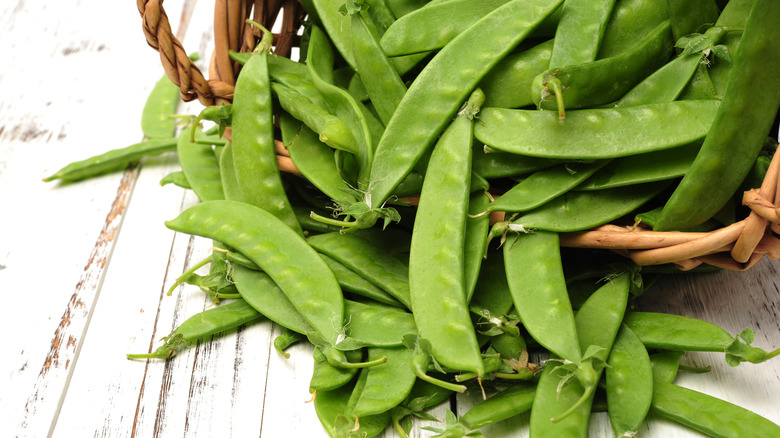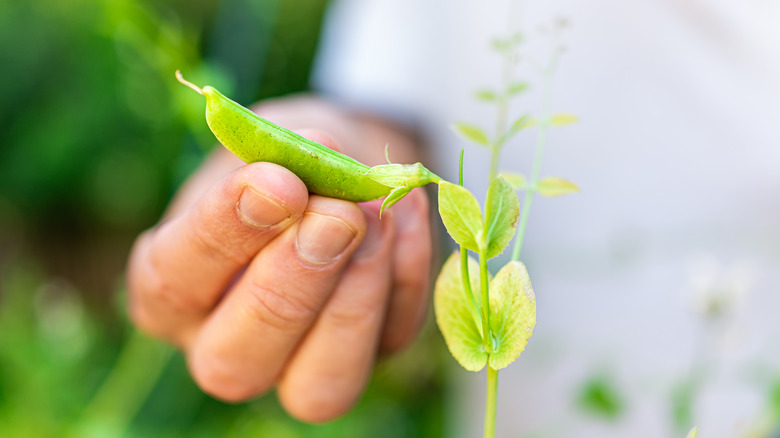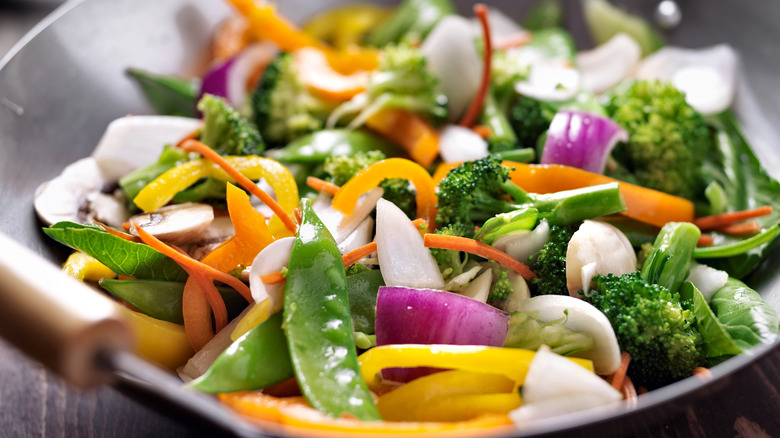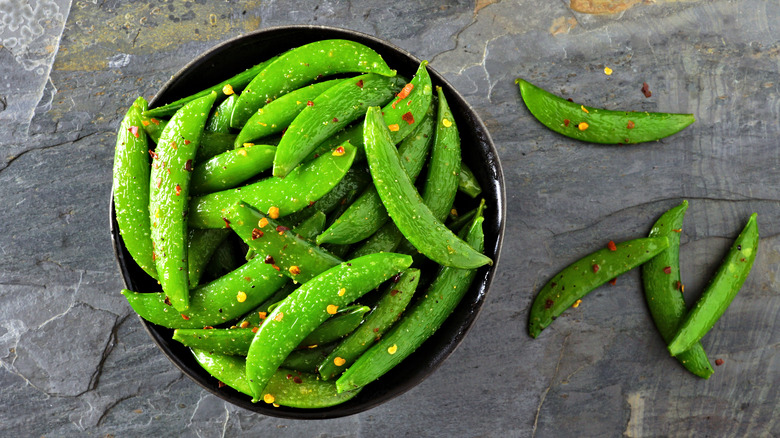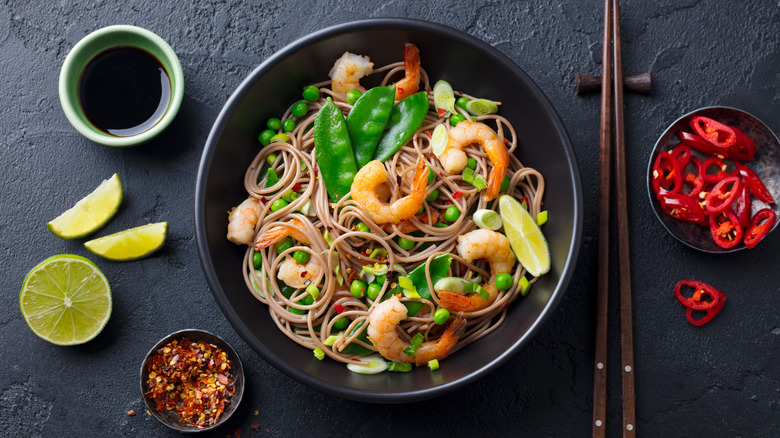Snow Peas Vs Snap Peas: What's The Difference?
It's finally warm outside, which means your Instagram feed has probably been saturated with photos of peas — blended into creamy risotto, tossed with mint in simple salads, or drizzled with lemon juice in quick sautés. We all know garden peas, shelling peas, and the peas that many of us ate as children. Those can be found in the freezer section of the grocery store year-round, so springtime is really a celebration of their legume family relatives — snow peas and sugar snap peas. But, do you know how they're different?
Both snow peas and sugar snap peas are members of the legume family's pea category, and grow on low-to-the-ground climbing plants. These plants are at their height in spring and summer and yield fruit in the form of the edible pea pod and seeds in the form of edible peas. While snow peas and sugar snap peas are often used interchangeably, their contrast in flavor and texture make them suitable for different culinary uses.
How to tell snow peas and sugar snap peas apart
The easiest way to distinguish snow peas from sugar snap peas is through the appearance of their pods. While both are bright green, slightly curved, and similarly sized, the two pea varieties have a key aesthetic difference — pod thickness. Snow peas are ready to be consumed when their pods are still unripe and the peas are not fully developed. They look relatively shiny, flat, and thin, so you can often see the silhouette of the peas poking through the pod.
Sugar snap pea pods, on the other hand, have a thicker and more puffed appearance, so you usually won't be able to see the rounder, more developed peas inside. You'll especially notice the difference when you bite into a sugar snap pea pod, which is crunchier and more substantial than that of a snow pea. Keep this trick in mind the next time you see unlabeled peas at the farmers market.
The flavor difference between snow peas and sugar snap peas
You can probably deduce that sugar snap peas are sweeter than snow peas, but you might not know that this was intentional. Sugar snap peas were developed in the 1970s as a best-of-both-worlds hybrid between the English pea and the snow pea, containing the sweetness of the former and the convenience of the latter's edible pod. These peas are sweet and refreshing, remaining plump and crisp whether eaten raw or briefly cooked. Because their flavor is so pronounced, they're often the star of the dish or the whole dish itself.
Snow peas, on the other hand, are the most mildly flavored pea variety, which gives them plenty of versatility in recipes. While still sweet, they have a bright, vegetal taste that melds well in savory, spicy, earthy, and other boldly flavored plates. That's why you'll often see them in multi-element dishes, like an Asian stir fry.
Different ways to prepare snow peas and sugar snap peas
Snow peas and sugar snap peas can both be eaten whole, so there's no need to discard the pods or de-shell the peas. They're both snackable and crispy when raw and extra green and crisp-tender when cooked. Beware before eating: Both varieties have a tough string on the flat seam of the pod that should be removed. It's a chore, but can be done easily with a paring knife and ensures that you don't end up trying to chew a fibrous bit of pea in your lunchtime salad.
Besides enjoying snow peas in a stir fry, you can slice the raw pods thinly on the diagonal. You can also blanch or sauté them and toss with your favorite herbs and seasonings — just cook them briefly so they don't lose their crunch. When it comes to sugar snap peas, simplicity is best so their sweetness shines. They're also good when blistered in a cast-iron skillet and topped with jalapeños and lime zest.
Nutritional differences between snow peas and snap peas
Snow peas and snap peas have nearly identical nutritional properties. They're less starchy members of the legume family, making them a lower-carb alternative to garden peas. While low in calories, they're rich in fiber, which is why you'll feel satisfied but not overwhelmed after eating a plate of peas, according to SFGate. A 100-gram serving of either variety gets you 12 percent of your daily manganese, which promotes calcium absorption and nerve function, among other things.
Finally, both peas are vitamin powerhouses, packing 22 percent of your daily A, 31 percent of K, and 100 percent of C, according to Healthline. All of that vitamin C will encourage plenty of wound healing, immunity boosting, and collagen production for the day, reports SFGate, so don't worry about working in any citrus if you've eaten a serving of peas.
